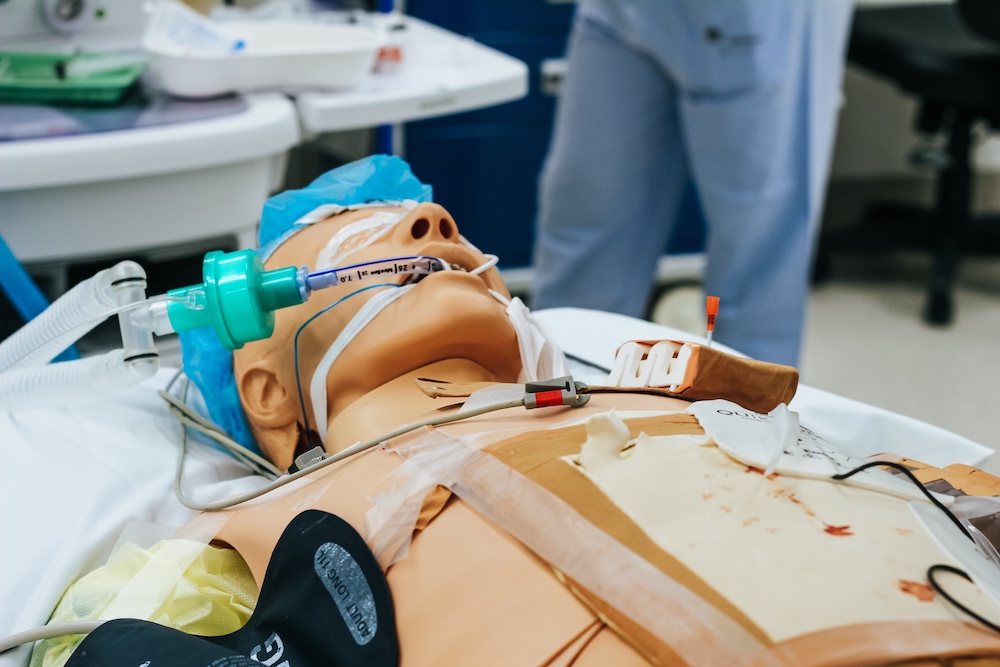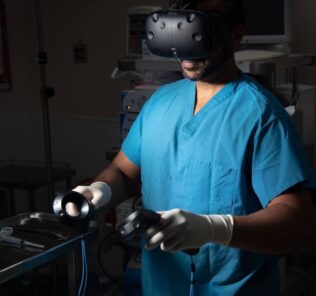How Much Does a Human Patient Simulator Cost?
A human patient simulator typically ranges in price from $10,000 to $100,000 depending on the type, brand, features, and included support services. Since dollars spent in the healthcare industry have a direct impact on patient lives, the clinical simulationist must carefully consider which manikin is best suited for their desired patient safety outcomes. To better understand these projected costs one must first grasp the various categories and relative price points of different medical simulation manikins. Depending on the desired outcome, task trainers, scenario manikins, or full-fidelity human patient simulators may meet objectives in various ways. Here, Nurse Practitioner and Healthcare Simulation Educator Nathan Costiuc, MSN, APRN, FNP-BC, starts to answer the question “How much does a human patient simulator cost”?
Click Here to Connect to Leading Healthcare Simulation Vendors!
Everyone wishes to be a savvy shopper, which is part of the reason most will spend an extra $20 to save $10 on shipping. Yet in healthcare, being a savvy shopper means more than saving a few bucks. Sure, costs saved in one section of the budget might look good on paper, but do your investments actually hit the mark on training objectives to the degree required? What good is saving money if we are not improving outcomes? The reality is that the clinical simulationist must wisely consider what type of manikin will suit their needs at the best price.
Sponsored Content:
Healthcare simulation manikins can vary widely in cost depending on a multitude of factors. But before we even begin to look at options, we must put the cart before the horse and start with assessing our own training objectives. What do we need to accomplish, why, and how many departments can share equipment to cover overlapping procedures without too much wear and tear on crucial components. From there, understanding what manikin categories exist is crucial, specifically: what each type is useful for, and the factors that influence the final price. The healthcare simulation champion looking for new hardware must further be armed with a strong grasp of their organization’s current and potential learning demands. As well, they must be potentially be prepared to undergo bid processes, especially as many public institutions will require one. In some instances, competitive exception forms can be completed to request specific equipment, but the reasons must be strong enough to warrant the exception. The information below can serve as a practical field guide for any clinical simulationist in the market for their newest simulated patient — but please note, the final price will depend on your country of origin (due to potential customs and tax fees), specific model, and the current price and/or available sales.
Just before we get to manikins, CPR torsos serve as a great example of task trainers. They are typically designed to do only two things: receive compressions and breaths. But even with CPR trainers, cost can vary considerably based on factors like the realism of tactile feedback and the presence of visual compression quality indicators. This can make the difference in spending $100 to spending $500 for a CPR task trainer.
Starting With the Basics: Low Fidelity Patient Simulators
Low-fidelity manikins, which are full bodied task trainers, are used to help the learner grasp a singular task, set of tasks, or specific competency. They are normally simple in design and may not include any technology at all inside of them other then plastic parts for changing sex or injection pads. Materials used to make these manikins are often affordable, and while they are usually designed to be durable, they are not designed for trauma austere environments.
Sponsored Content:
These low-fi manikins are usually life-size and have articulating joints. They are designed to practice patient positioning, lifting, bathing and other similar activities. A more affordable basic clinical simulator can cost as little as $1000 for physical weight manikins but may not move or feel as heavy as a more realistic $5,000 manikin. This would include products like the Life/form Complete KERi Manikin from Nasco Healthcare, without any technology inside.
In the higher range of this category, between $8,000-$12,000 or so, you start to find the most affordable human simulators which include basic technology components like the nursing anne, which will interact with networks, and same-brand control systems primarily used for operating higher-tiered manikins. Certainly though when we look at pricing at $15,000 or above, we move into “another level” with regards to more realistic product features.
Upping the Features: Mid-Fidelity Manikins
Healthcare simulators that are more expensive than the previous class focus on increasingly complex learner competencies. Generally, these types of manikin are used to create intricate clinical simulation scenarios that require a higher level of fidelity. These pricier manikins may not immediately appear very different from the previous class because their differences lie underneath the surface.
Speakers, mechanical moving parts, electrodes, and tubing can be seen under the hoods of these simulators. These bits of machinery can allow the simulationist to speak through the manikin (aka “Voice of God”), present various vital signs, or make the manikin cry/vomit/urinate/bleed. They are often connected to computers or tablets that allow the simulationist to control these actions remotely. In addition, these manikins can also allow the learner to practice virtually any procedure, including surgery, wound dressings, chest tube management, or airway insertion.
In determining cost, “features” is the key word. Depending on what objectives the clinical simulationist has in mind for their learners, they can spend anywhere from $15,000 to $35,000 for these types of manikin. Putting together direct comparison tables to outline the various features offered by different manikins and aligning this with desired outcomes is a great way to find out what manikin is best suited to your needs. Here would be manikins such as the SimMan Essential or CAE Juno.
Going Full Monty: The High-Fidelity Patient Simulators
The next tier of human patient simulators not only do everything you want: they do everything you do! These types of manikins come as close to real patients as can be made in a factory. However, as always, the point of using these manikins is not extravagance but to enable meeting of desired learning outcomes. The complexity of the competency at hand may justify spending as little as $55,000 and all the way up to $250,000 for a human patient simulator that reflects, to a high level of realism, actual patient care. More commonly though, the current “flagship” high-fidelity manikins like the SimMan 3G from Laerdal, the Victoria from Gaumard, the CAE Apollo from CAE Healthcare, and the Leonardo from MedVision run around $65,000-$85,000. Additionally, one must consider the costs associated with extended warranties which will help to have your manikin working for many more years to come.
These are just some of the variables to weigh when deciding which type of human patient simulator to purchase, whether for a task trainer or a full-fidelity clinical simulation manikin. For those looking for an even greater breakdown, try the 400 pages dedicated to such topics in the Springer Series published book edited by Crawford, Baily and Monks: Comprehensive Healthcare Simulation: Operations, Technology, and Innovative Practice.
Learn More About Healthcare Simulation Manikins
Nathan Costiuc, MSN, APRN, FNP-BC, is a Nurse Practitioner and Healthcare Simulation Educator. He began his career delivering clinical simulation to nursing students, quickly realizing the industry’s potential to impact modern training for all healthcare professionals. In navigating better ways to deliver clinical simulation, Costiuc entered into the world of virtual reality, and now works as a Clinical Education Specialist for Oxford Medical Simulation. His passion is in using innovative methods and emerging technologies to reduce medical error, solve practical problems, and improve patient care. He also actively works with disabled veterans in the clinical setting.
Sponsored Content:


















